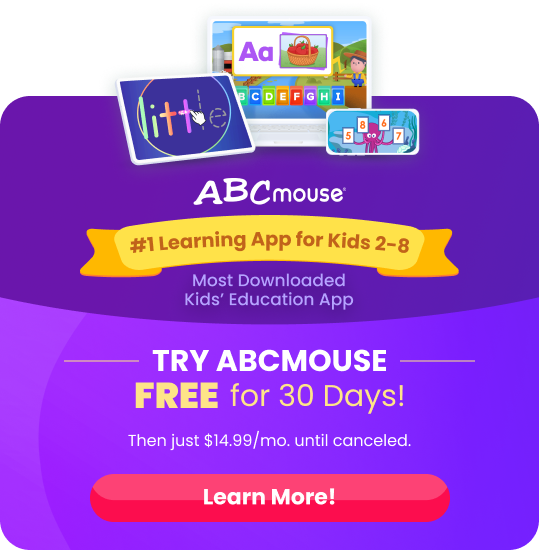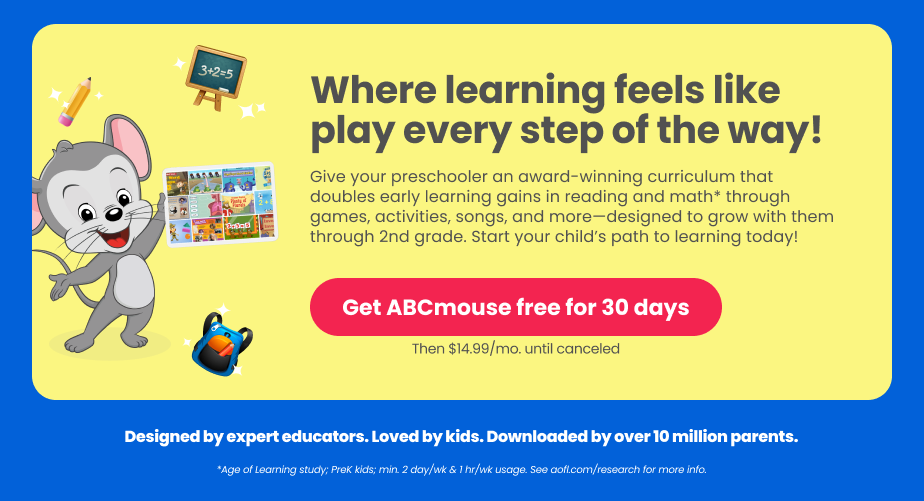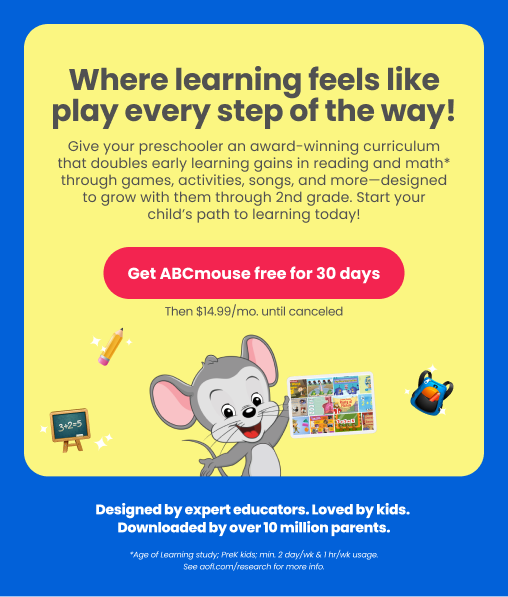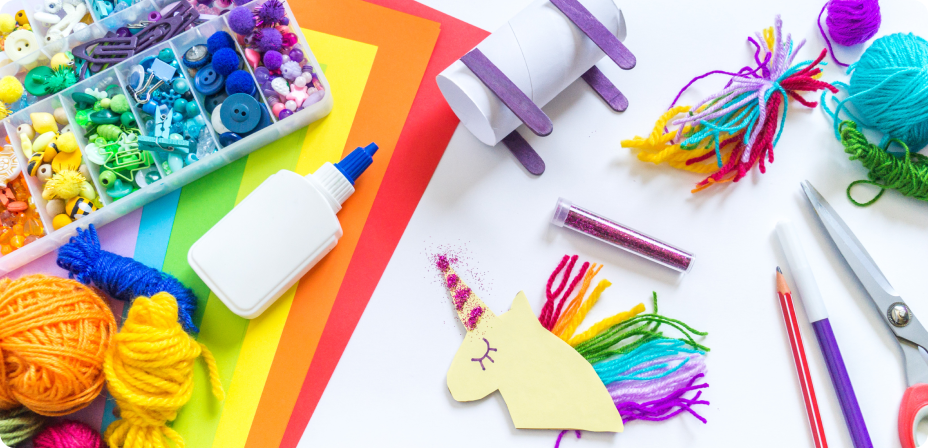37 Engaging and Educational Summer Activities for Preschoolers
Varies
Share
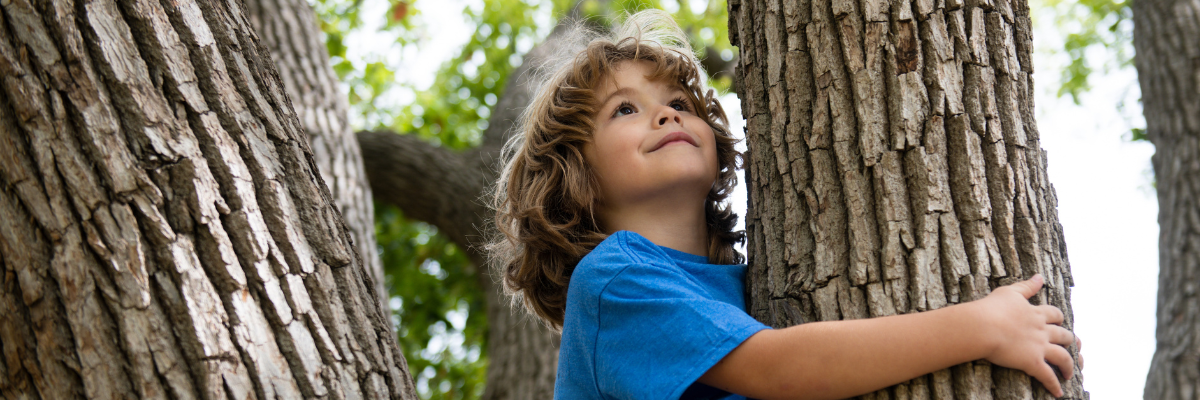
Summer is a wonderful time for preschoolers to explore and learn in new and exciting ways. With long school breaks, it’s important to provide educational activities that keep young minds engaged and learning.
The best educational summer activities for preschoolers involve outdoor play, lots of creativity, and a whole lot of fun, helping parents and caregivers make the most of this valuable time for their little ones. For some quiet learning at home or on the go, print out our Summer Worksheets for Kids, which include printable activities for preschoolers.
Along with creative ideas and outdoor activities, add play-based learning into your preschooler’s day with the ABCmouse Preschool Learning Program, featuring interactive lessons, games, and activities designed to keep kids learning all summer long and proven to reduce summer slide.
Outdoor Nature Exploration Ideas
Summer provides a perfect opportunity for preschoolers to connect with nature. Take them to local parks, nature reserves, or even your backyard to explore the wonders of the natural world. Encourage them to observe and discuss various plants, insects, and animals.
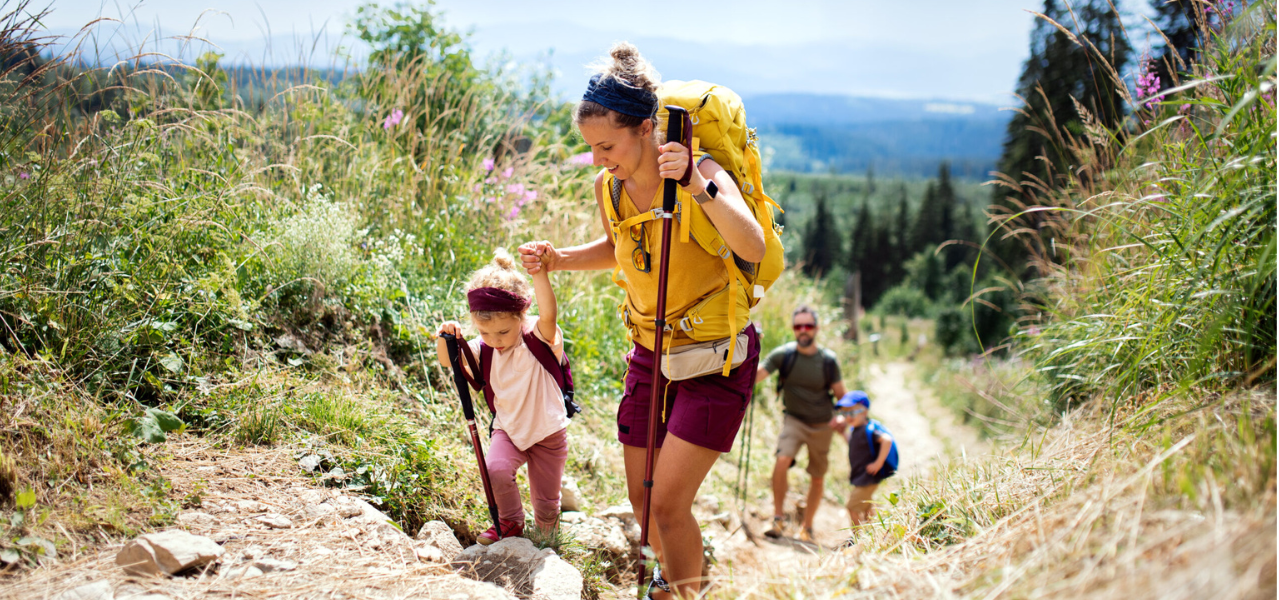
Engage their curiosity by asking questions about what different animals eat or how plants grow. This activity promotes a love for nature and enhances their cognitive and observational skills.
More Outdoor Activities for Preschoolers
1. Bug hunting and insect identification
Going on a bug hunt is an exciting way to explore the outdoors. You can start by looking under rocks, inside flowers, or near streams to find different kinds of insects. Once you find an insect, try to identify it using a simple guidebook or an app.
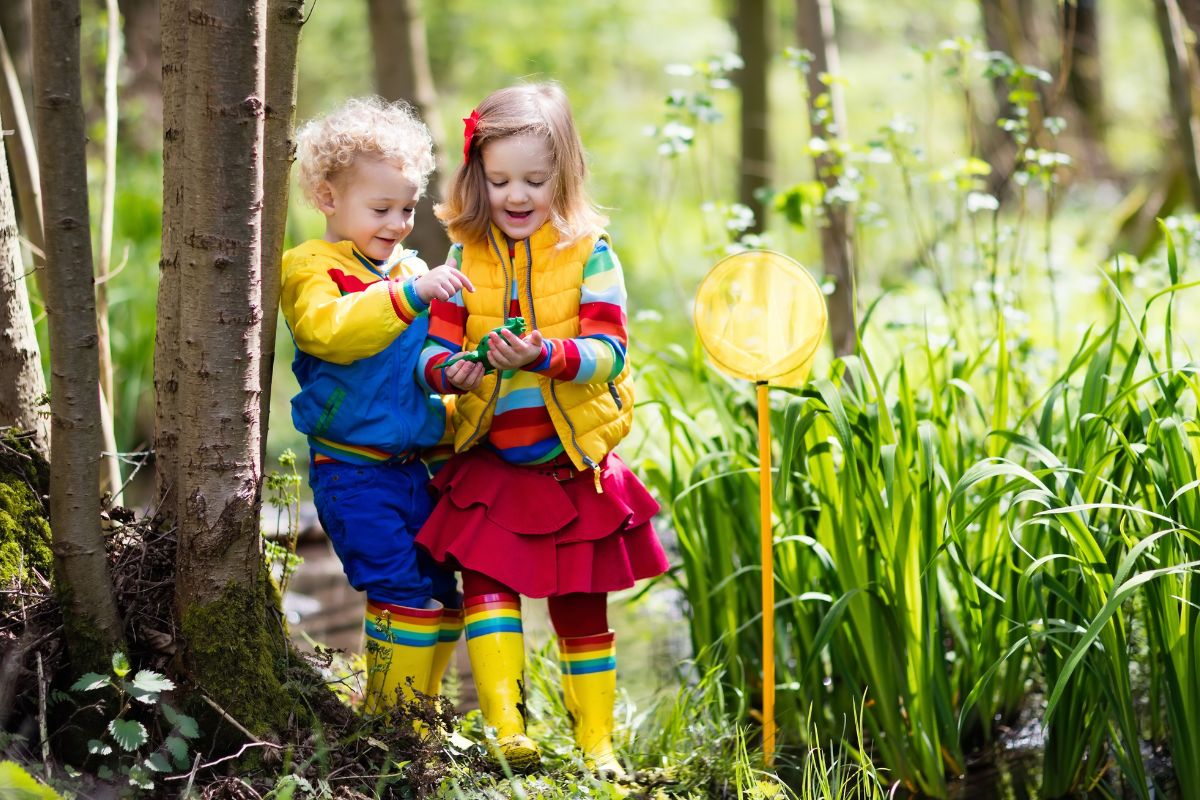
This activity helps children learn about the various insects living around them, their roles in the environment, and how they look and behave. It’s a fun way for kids and adults alike to connect with nature and develop observational skills.
2. Sensory scavenger hunt (find something soft, something rough, something fragrant)
A sensory scavenger hunt encourages children to use their senses to explore their surroundings. The goal is to find objects that match different sensory descriptions, such as something soft like a leaf or something rough like a tree bark.
This activity is great for children as it helps them to engage with the natural world in a mindful way, paying close attention to the texture, shape, and feel of objects they encounter outdoors. It’s a simple, interactive way to explore nature’s diversity.
3. Nature-themed obstacle course or relay race
Creating a nature-themed obstacle course or relay race is a fun way to get active in the outdoors. You can use natural elements like logs to jump over, hills to run up and down, or a series of stones to step on without touching the ground.
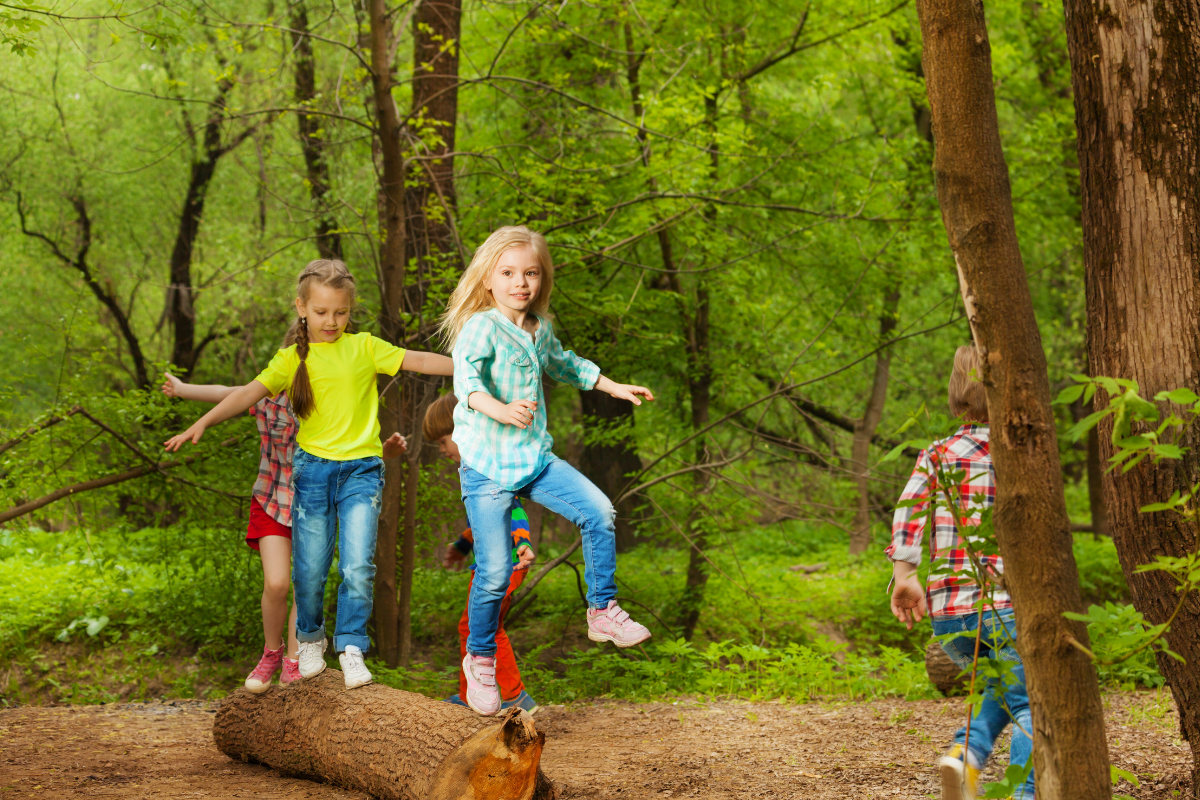
This activity not only promotes physical fitness but also encourages creativity in using the natural landscape to design challenging and entertaining courses. It’s a great way for families or groups of friends to enjoy the outdoors and work together or compete in a friendly manner.
4. Cloud-watching and identifying shapes
Lay a blanket in a grassy area and spend some time with your child looking up at the clouds. Encourage them to imagine and identify shapes, animals, or objects the clouds resemble. Go a step further and make up stories about the cloud shapes you see.
This simple pleasure stimulates the imagination and can be a calming way to connect with the natural world. You can also teach your child about different types of clouds and what they indicate about the weather. It’s a wonderful way to spend an afternoon, letting your imagination run wild with the shapes in the sky.
5. Discuss how weather impacts the landscape
While you’re outside, take the opportunity to talk about how weather changes the landscape. Discuss how rain helps plants grow, how wind can move sand, leaves, or seeds, and how the sun dries up puddles.
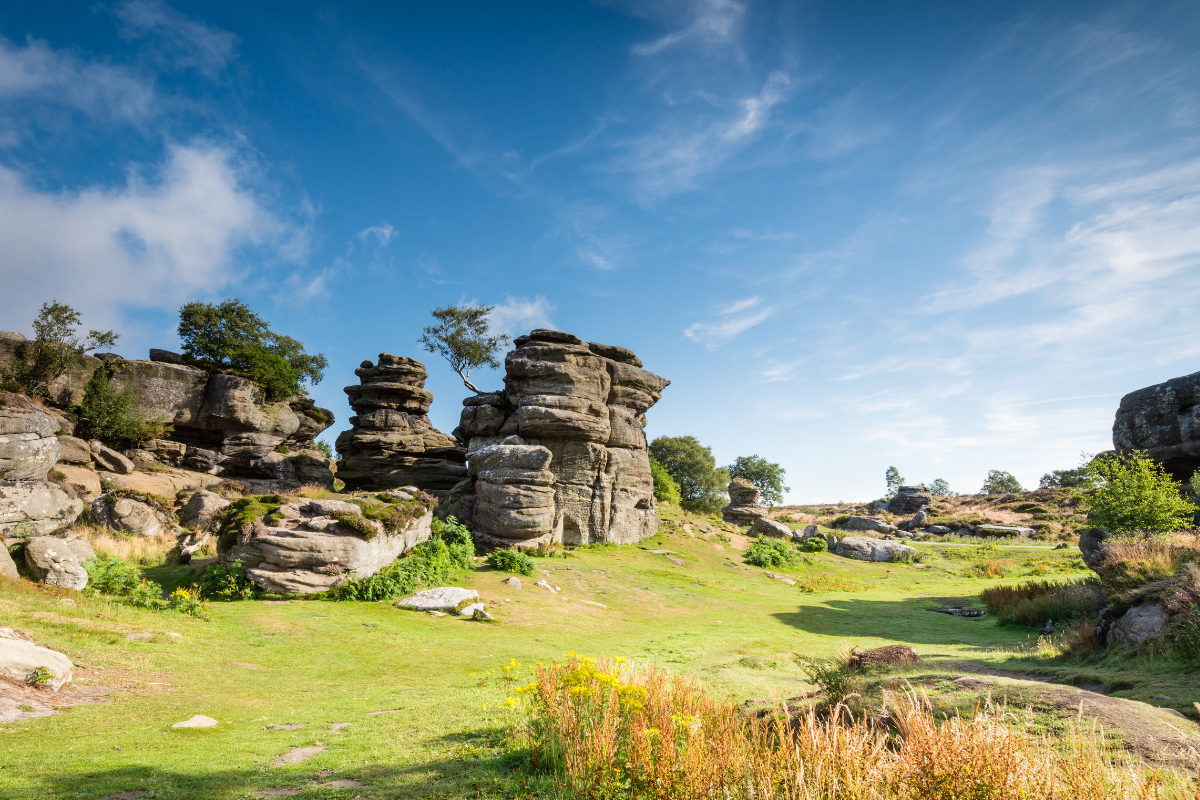
Use simple language to explain these concepts, helping your child understand the relationship between weather and the environment, and sparking an early interest in science. Understanding how weather affects the landscape can help your child appreciate the power of nature and the constant changes happening around us.
Check out more preschool weather activities here.
6. Journaling and drawing nature
Give your preschooler a notebook and some crayons or colored pencils to draw what they see in nature. They can sketch the bugs they find, shapes of clouds, or different plants and flowers.
Help them think of and write simple descriptive words of what they observe during their outdoor adventures. This activity not only helps with fine motor skills but also with observation and language skills, as they learn to describe their world on paper.
Gardening and Planting Ideas
Encourage preschoolers to develop green thumbs by involving them in gardening activities. Let them help choose and plant seeds, water plants, and watch them grow.
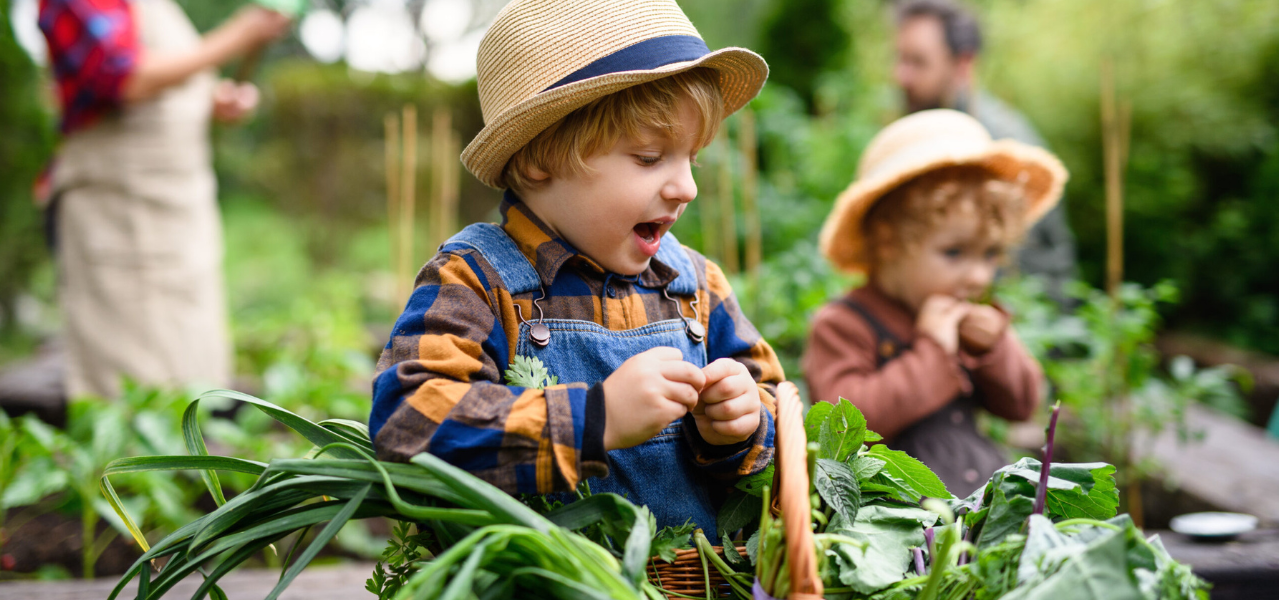
Gardening fosters a sense of responsibility, teaches patience, and provides hands-on learning experiences about the plant life cycle, the importance of water and sunlight, and the role of insects and pollination.
Gardening and Planting Activities for Preschoolers
1. Make silly seed animals
Introduce your little ones to the fun of gardening by creating silly seed animals. Use stockings or small pieces of fabric to create shapes, fill them with soil and sprinkle some grass seeds inside.
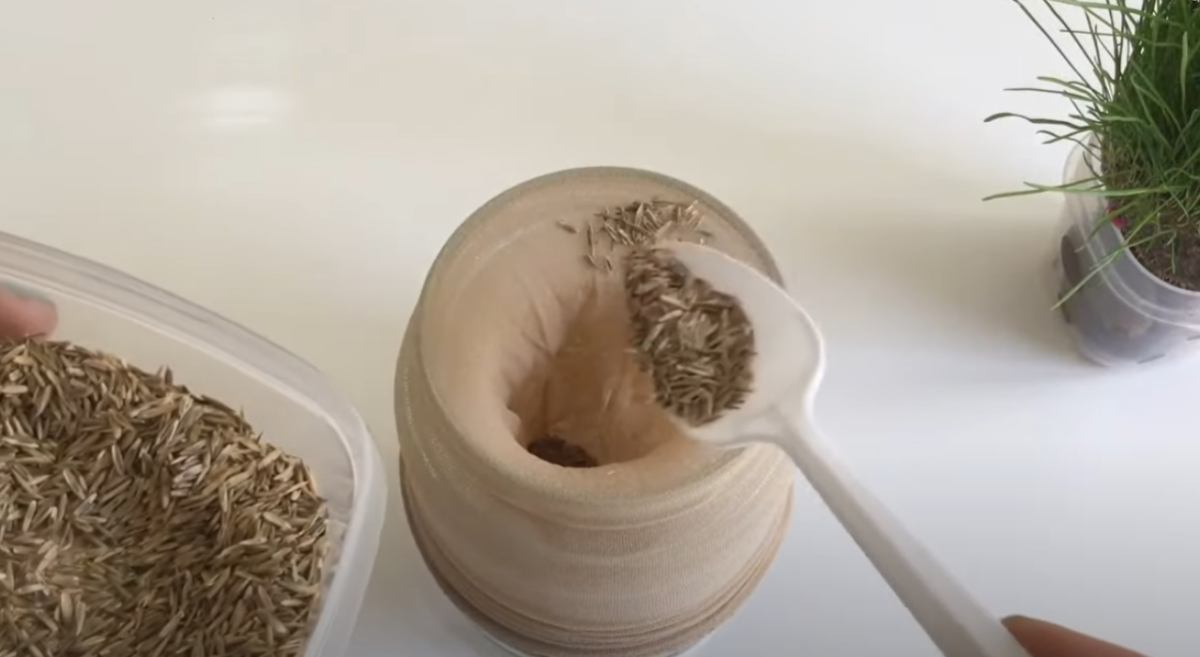
As the grass seeds grow, they’ll look like hair or fur on the animal shapes. This teaches preschoolers about how plants grow and allows them to use their creativity in designing their seed animals.
2. Try easy-to-grow plants
Start your child’s gardening journey with plants that are easy to grow and care for, like sunflowers or cherry tomatoes. These plants are great for little gardeners as they grow quickly and show visible results that can keep their interest.
Sunflowers can grow tall and strong, while cherry tomatoes produce sweet fruits, helping to teach children patience and the reward of caring for living things.
3. Make recycled seed paper
Engage your preschoolers in an eco-friendly craft by making recycled seed paper together. Mix paper scraps with water to create a pulp, then add wildflower seeds before spreading the mixture out to dry. Once dry, cut the paper into shapes or cards. Plant them later in the garden and watch the wildflowers grow.
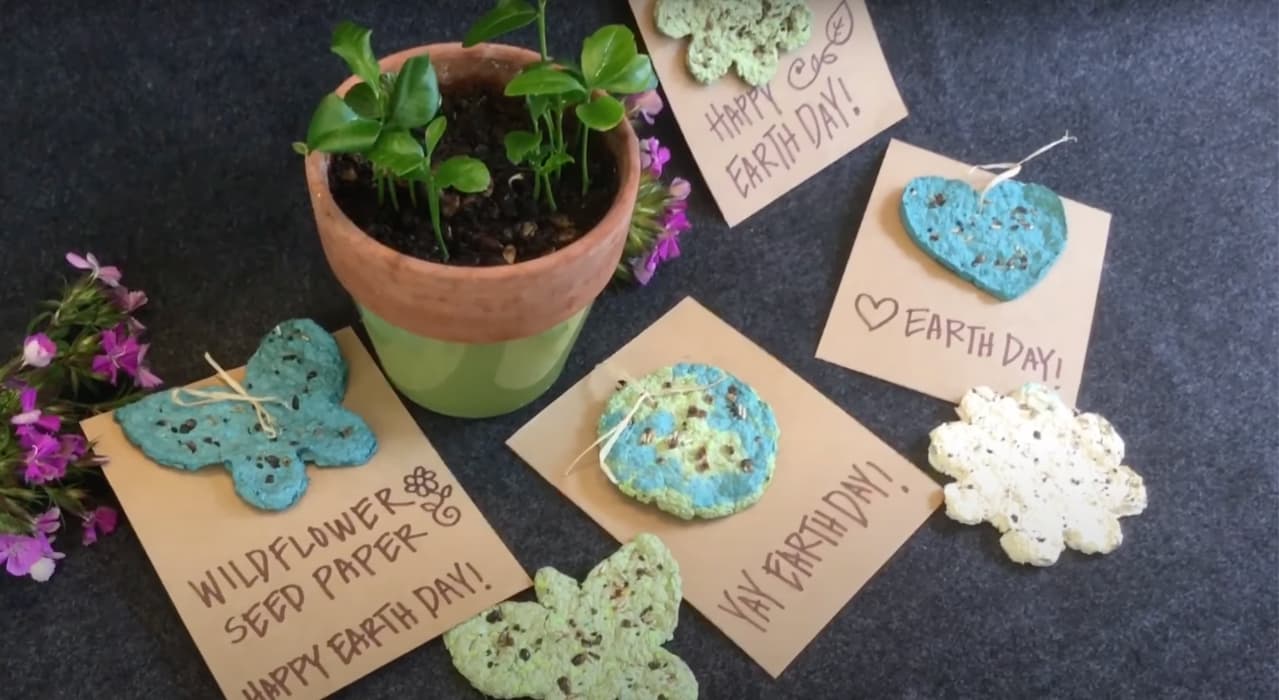
This activity teaches kids about recycling and the lifecycle of plants in a fun and interactive way.
4. Get child-sized gardening tools
Equip your preschoolers with child-sized gardening tools to give them a real hands-on gardening experience. Small spades, rakes, and gloves are perfect for little hands and make gardening activities safer and more enjoyable.
Teach them how to clean their tools and put them away when they are done using them. This not only helps develop their fine motor skills but also instills a sense of responsibility and pride in taking care of their garden and belongings.
5. Plant a butterfly or pollinator garden
Create a magical space in your garden by planting flowers that attract butterflies, bees, and other pollinators. Choose plants like lavender, marigolds, and zinnias.
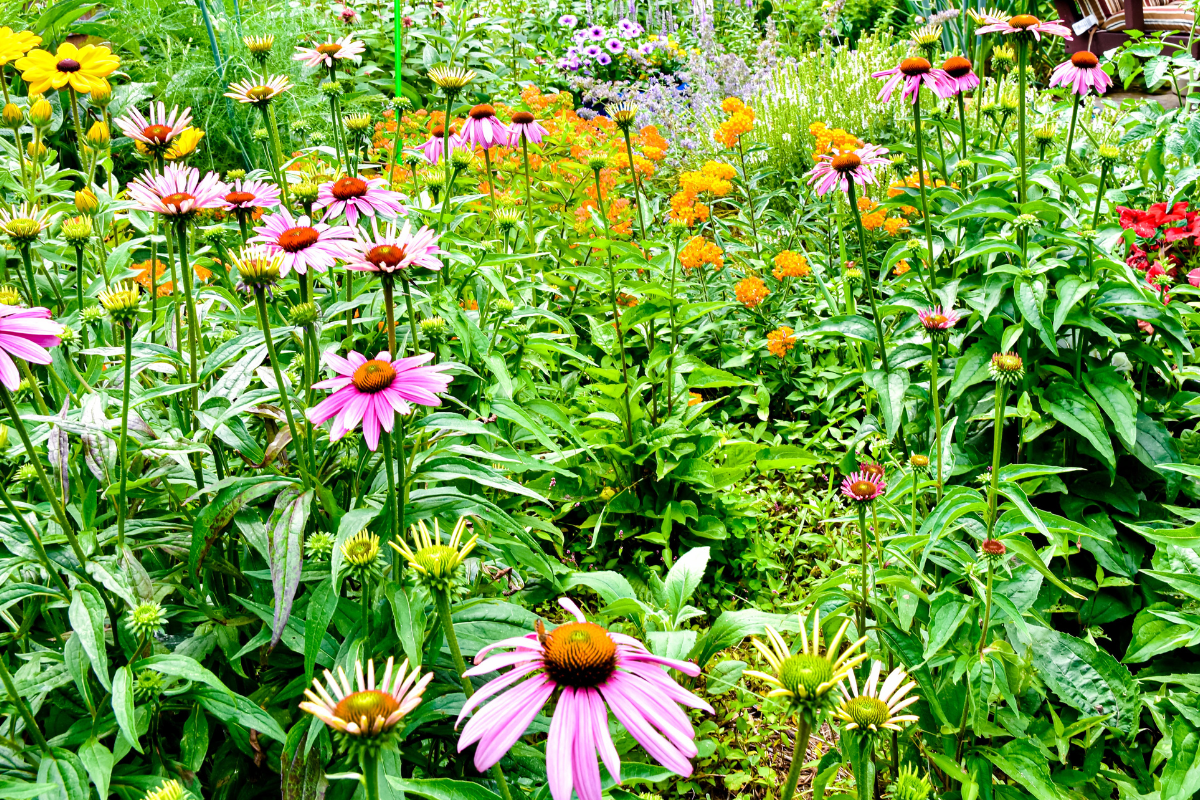
As your garden blooms, it will become a lively hub of activity, providing endless fascination for your preschoolers as they observe and learn about different insects and their roles in nature.
6. Host a harvest party
Once your garden has produced its bounty, celebrate with a harvest party. Let your preschoolers pick the fruits, vegetables, and flowers they’ve grown.
Prepare simple dishes or snacks together using the produce from your garden. This festive event not only rewards their hard work but also teaches them about the farm-to-table concept and the joy of sharing with family and friends.
Arts and Crafts Activities for Preschoolers
Engaging in arts and crafts activities stimulates a preschooler’s creativity and fine motor skills. Set up a craft corner with materials like paper, glue, scissors, crayons, and paint. Encourage them to create their masterpieces and express their imagination freely, then work with them to clean the space up when they’re finished.

You can also introduce simple projects related to the season, such as making summer-themed collages or designing sand art. These activities can promote hand-eye coordination and self-expression. Check out our list of summer craft ideas for even more preschool art ideas.
Additional Summertime Preschool Art Activities
1. Create nature art
Gather leaves, flowers, and sticks during a walk with your preschooler and bring them back to your crafting area. Help your child arrange these items on paper to create beautiful pieces of art.
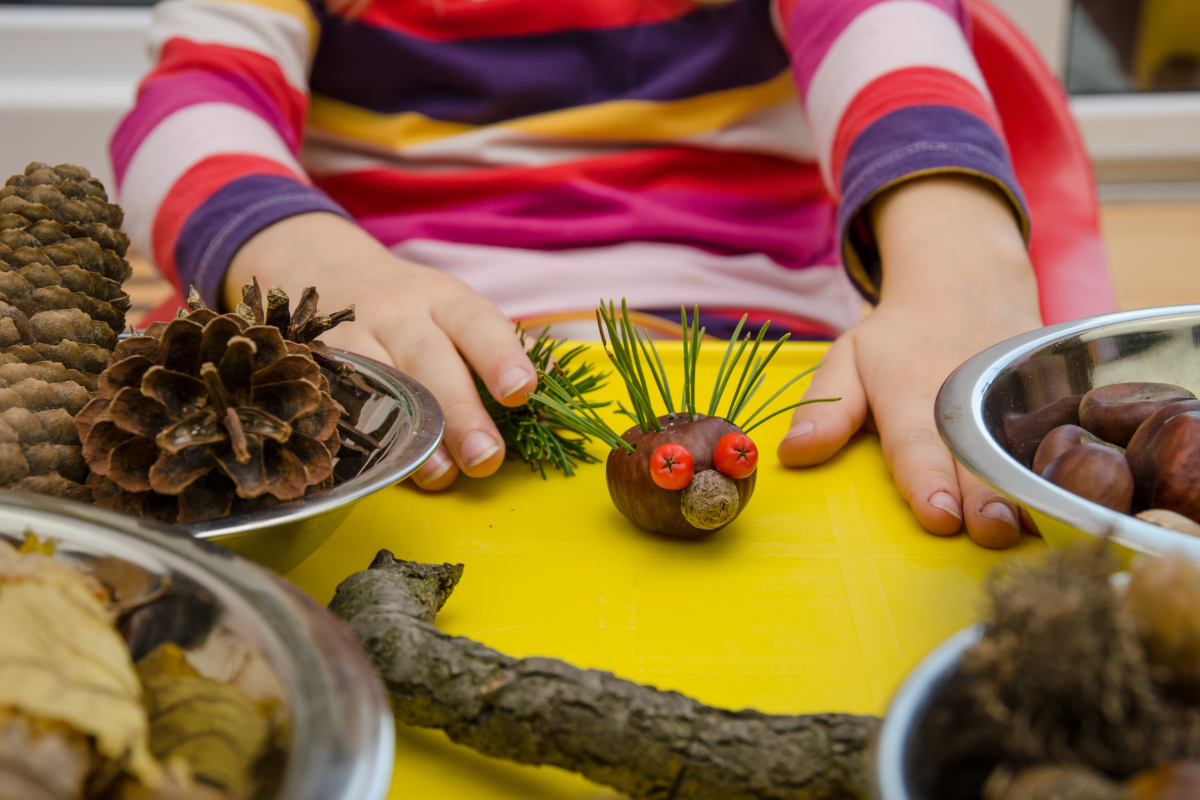
They can glue the items down to make a permanent piece or simply arrange them to enjoy the process of creating. This activity encourages creativity and creates an opportunity for kids to explore different types of plants and their parts.
2. Try large-scale art projects
Set up a large canvas for your child’s art projects using big sheets of paper or cardboard or an old sheet. This gives them the freedom to make big, bold strokes with their arms, inviting them to move while creating their art.
It’s also a great way for them to experiment with scale, creating anything from large landscapes to giant, imaginative creatures. This unrestricted space can lead to uninhibited creativity and fun.
3. Do some finger painting
Finger painting is not just fun; it’s also a fantastic sensory experience for young children. Offer non-toxic, washable paints and let your child explore mixing colors directly with their hands.
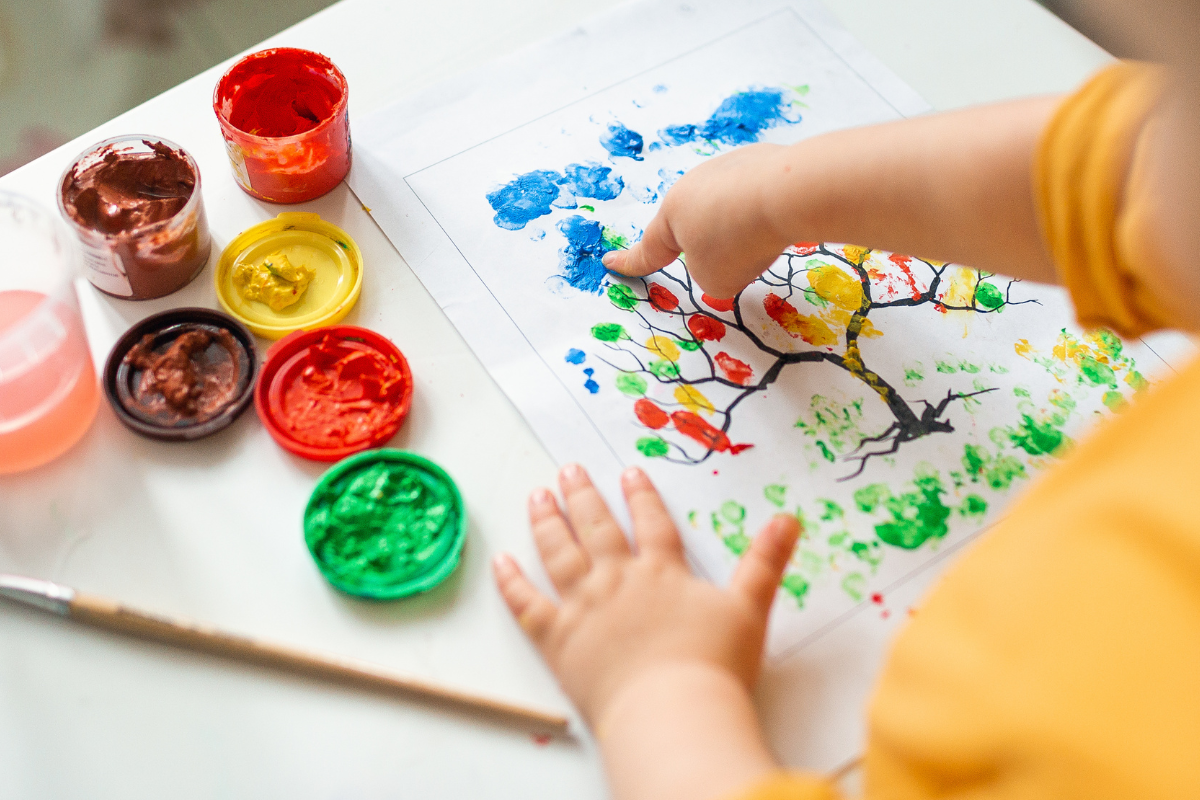
This tactile activity supports the development of fine motor skills and sensory processing, and it’s also a playful way to introduce concepts like color blending and the feelings of different textures.
4. Experiment with different painting tools
Introduce your preschooler to a variety of painting tools beyond the traditional brush, such as sponges and stamps. Show them how to use sponges to dab paint onto paper, creating interesting textures, or how stamps can make repeated patterns.
Exploring these tools can lead to unexpected art projects, helping children understand there are many ways to express their creativity.
5. Paints indoors and outdoors
Mix up your painting sessions by taking them outside or somewhere new. Outdoor painting can inspire children with natural beauty and different lighting conditions.
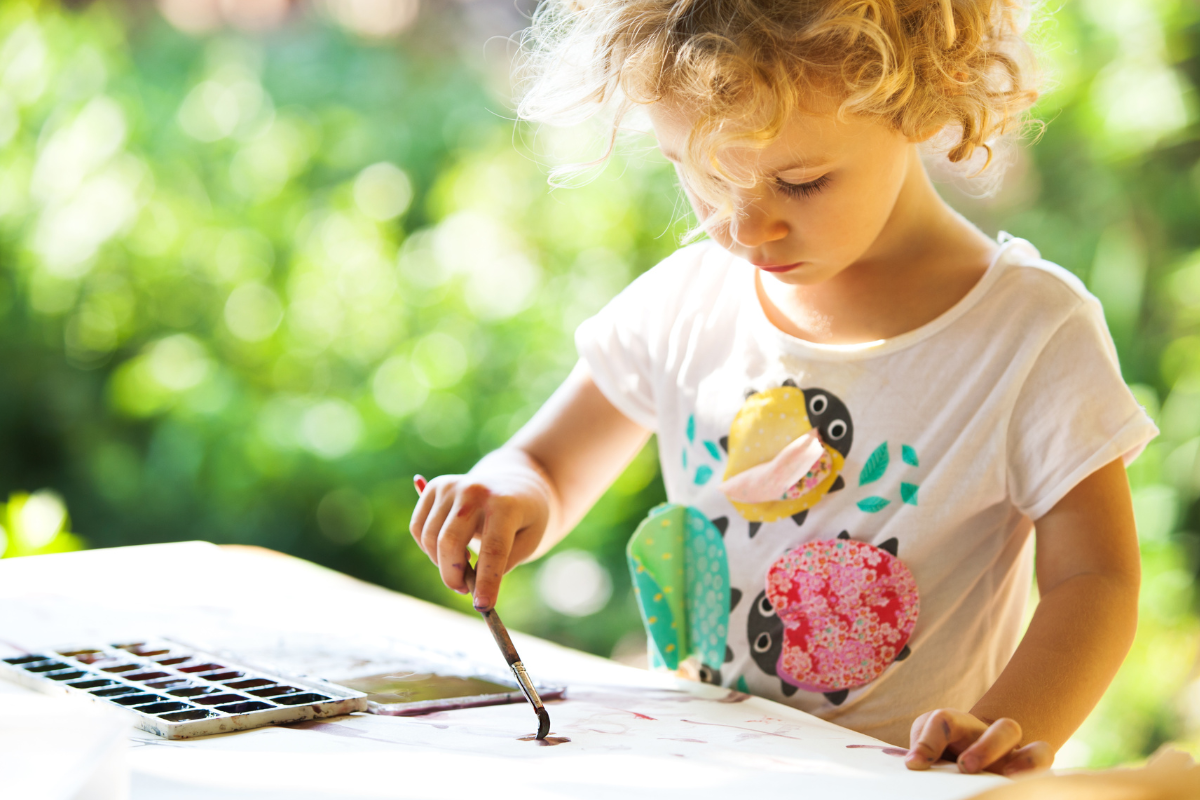
Indoors, you can control the environment and materials more, possibly leading to more focused projects. Both settings offer unique benefits and experiences, from painting landscapes in the fresh air to creating controlled, detailed works in a quiet indoor space.
Preschool Educational Apps
As parents, we can oftentimes feel busier during the summer months than when our children are in school. If you need a bit of respite from planning educational activities, download the ABCmouse app, which provides a wide range of interactive activities, games, and lessons designed to help children develop essential skills in various subjects such as reading, math, science, and art.
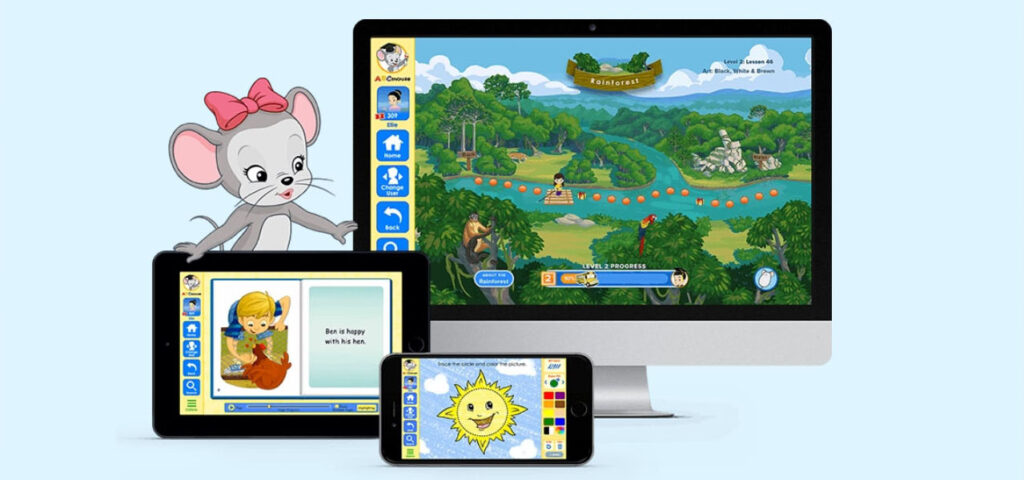
Summer is a time of fun and learning for preschoolers. By incorporating these educational activities into their summer routines, parents and caregivers can help to ensure that their children’s minds continue to grow and flourish during the break from school.
These engaging activities provide valuable learning opportunities while allowing preschoolers to enjoy the joys of summertime. Research has shown that using ABCmouse can effectively help prepare kids for kindergarten, making it a valuable tool to include in their learning journey.
Reading and Storytelling Activities for Preschoolers
Reading is a fundamental skill that should be nurtured from an early age. Take advantage of the extra time in the summer and make reading a daily habit by setting aside dedicated story time. Choose age-appropriate books with colorful illustrations, engaging stories, and simple concepts.

Encourage preschoolers to participate by asking questions, making predictions, and allowing them to retell the story in their own words. Storytelling develops language skills, fosters a love for reading, and nurtures imagination.
More Summer Reading Activities for Preschoolers
1. Read nature-themed stories outdoors
Create a magical reading area under the canopy of a shady tree for your preschooler. This serene setting is perfect for diving into stories set outdoors, surrounded by the sights and sounds of nature.
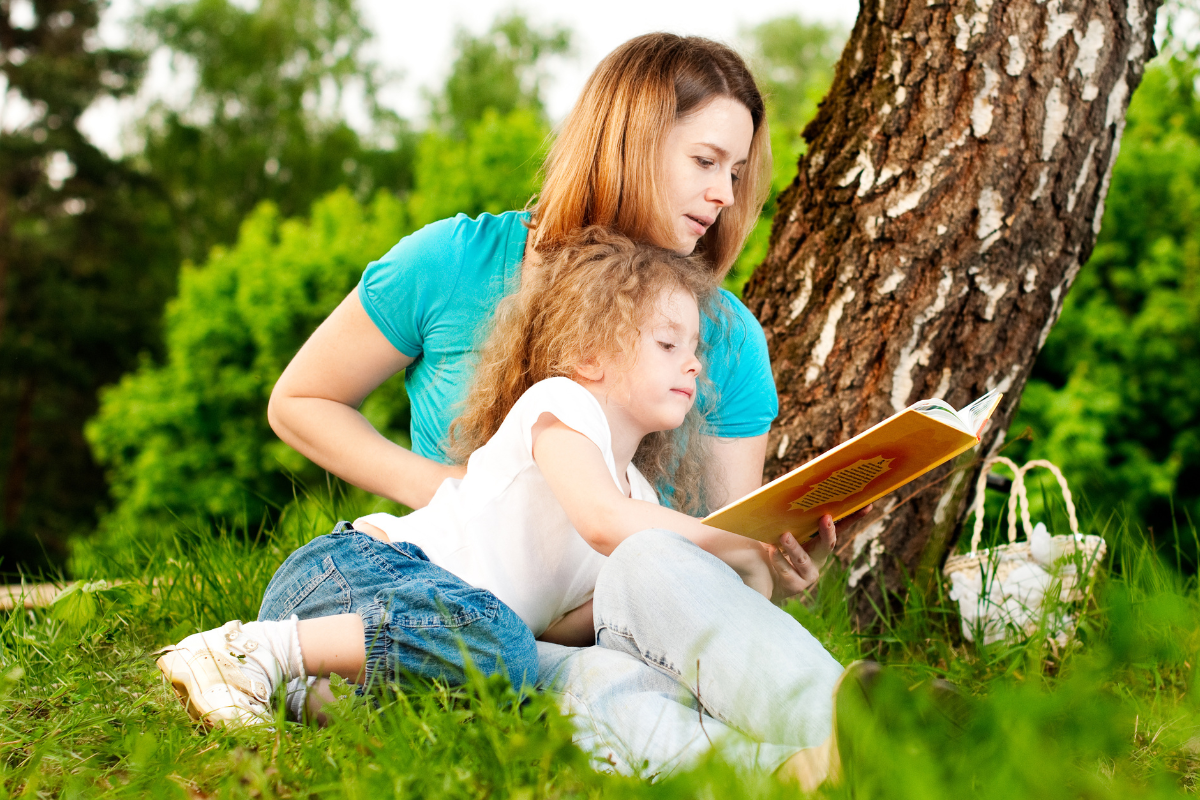
Reading outside not only makes the experience more memorable but also connects children with the environment, making the stories feel even more special.
2. Choose books with summer themes
Select books that celebrate the joy and adventure of summer, like stories about beach outings, camping trips, or garden explorations. These themes can resonate with children’s own experiences or spark excitement about upcoming activities.
Such thematic reading encourages kids to make connections between the stories they hear and the world around them. Here are a few books you could try:
- “The Seashore Book” by Charlotte Zolotow
- “We’re Going on a Bear Hunt” by Michael Rosen
- “And Then Comes Summer” by Tom Brenner
- “A Camping Spree with Mr. Magee” by Chris Van Dusen
- “Good Night, Campsite” by Adam Gamble and Mark Jasper
- “Jabari Jumps” by Gaia Cornwall
- “The Curious Garden” by Peter Brown
3. Have a “book picnic”
Organize a book picnic, encouraging children to bring along their favorite stories, a comfy picnic blanket, and some tasty snacks.

This activity combines the pleasures of reading with the fun of eating outdoors, creating a delightful and educational summer activity. Invite friends and family members along for your children to share their books with and encourage discussions about the stories.
4. Encourage children to retell stories
After reading a story, invite your child to act it out with you. This can be a fun way to reinforce the narrative and characters, helping to improve comprehension and storytelling skills.
Dramatic play can also boost confidence and creativity, allowing children to express themselves in new and exciting ways.
5. Incorporate props and puppets
Use props and puppets related to the stories you’re reading to bring the tales to life. Children can hold and manipulate these items as you read, making the story more engaging and interactive.
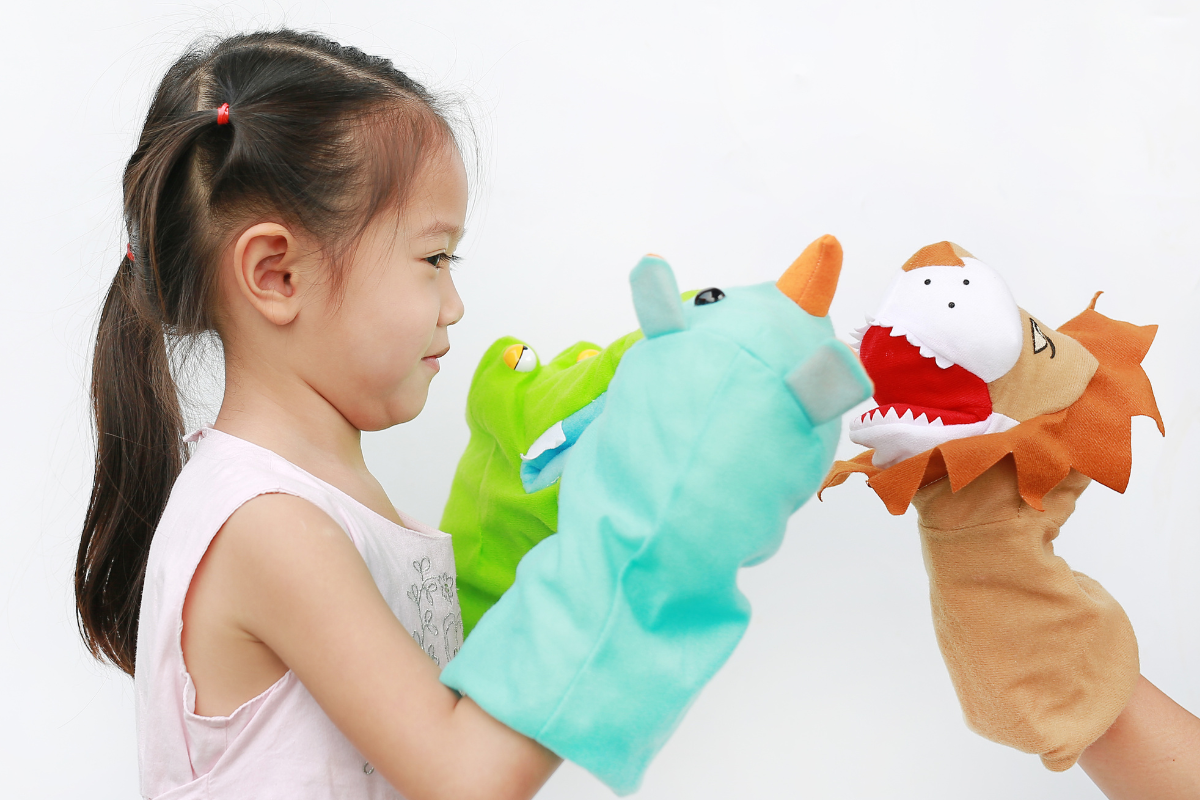
This hands-on approach can help with retention and understanding, as well as making reading time more dynamic and fun.
6. Create summer-themed stories
Inspire your preschoolers to create their own stories with summer themes. Provide them with paper and crayons to draw their narratives or help them write down their tales.
This activity encourages creativity and self-expression, and it’s a wonderful way for children to share their own summer experiences or imaginative adventures.
7. Tell campfire stories
For a truly memorable experience, organize a storytelling session around a campfire or under the stars on a clear night. The flickering firelight or the vast night sky can make the stories feel even more enchanting.

This setting is perfect for sharing tales of adventure and mystery, creating lasting summer memories.
Science Experiments for Preschoolers
Preschoolers are naturally curious about the world around them, making science experiments a fantastic summer activity. Opt for simple and safe experiments that can be conducted at home with basic household items.

For example, create a baking soda and vinegar volcano, explore buoyancy by building boats with various materials, or observe the effects of ice melting. These experiments introduce basic scientific concepts, encourage critical thinking, and promote a hands-on understanding of cause and effect.
Summer Science Activities for Preschoolers
1. Grow a mini herb garden
Start a mini herb garden with your preschooler by planting seeds or small plants in pots or a designated garden space. Choose easy-to-grow herbs like basil, mint, or parsley. Watch and record the growth together, teaching your child about the parts of the plant and what plants need to grow (sunlight, water, soil).
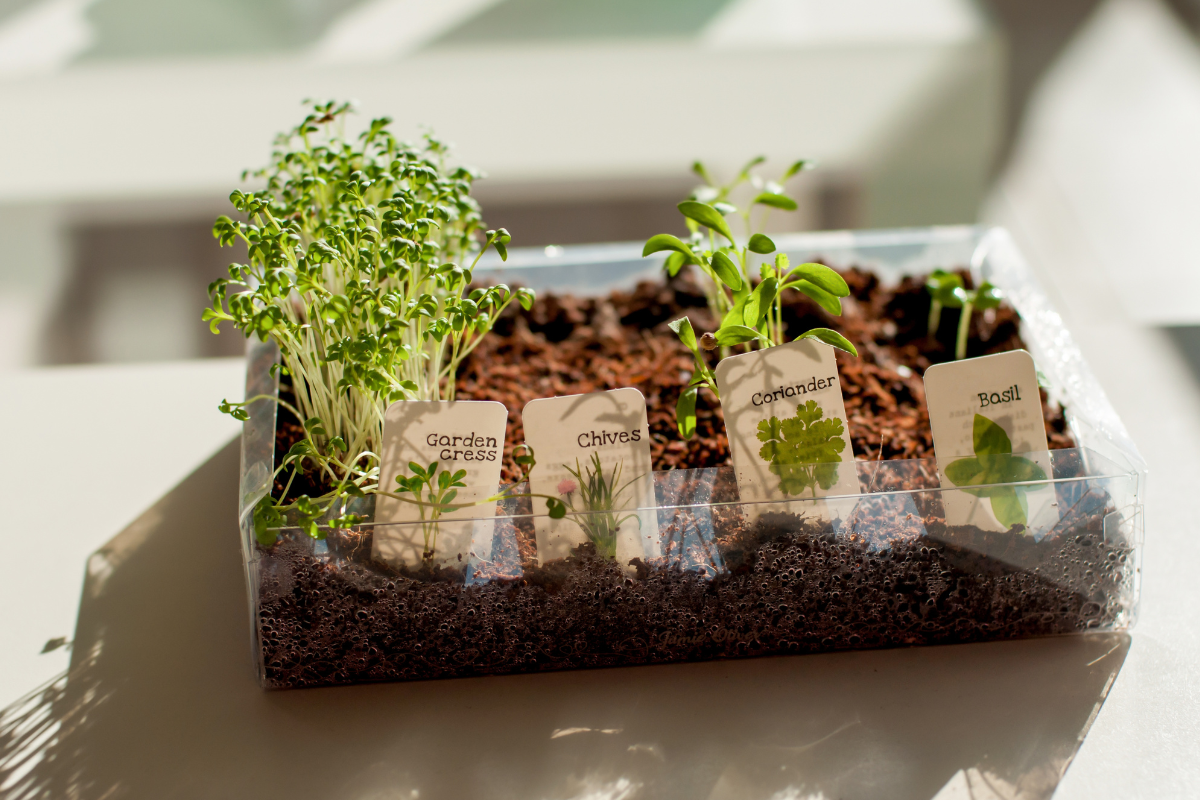
This hands-on activity not only teaches patience and responsibility but also offers an early introduction to the concepts of botany and the life cycle of plants.
2. Experiment with color mixing
Fill several glasses with water and add a few drops of different food colorings to each. Encourage your child to mix colors by transferring water from one glass to another using spoons or droppers.
This simple yet fascinating activity introduces the concept of primary and secondary colors, and it’s a great way to develop fine motor skills and understand color theory through a tactile and visual experience.
3. Explore the concept of density
Create a layered density jar using liquids of different densities like honey, dish soap, water, and vegetable oil. For a fun twist, you can add small objects like a grape, a tiny plastic toy, or a cork to see where they settle.

This visually appealing experiment introduces preschoolers to the concept of density and buoyancy in an easy-to-understand and engaging way.
4. Build a solar oven
Construct a simple solar oven using a pizza box, aluminum foil, plastic wrap, and black paper. Place s’mores or pieces of chocolate on a plate inside the oven and let the sun do the work.
This project teaches children about renewable energy, the power of the sun, and basic principles of science, all while ending with a tasty treat.
5. Set up a shadow tracing activity
On a sunny day, use toys or even yourselves to cast shadows on a large sheet of paper on the ground. Trace the shadows at different times to see how they change.
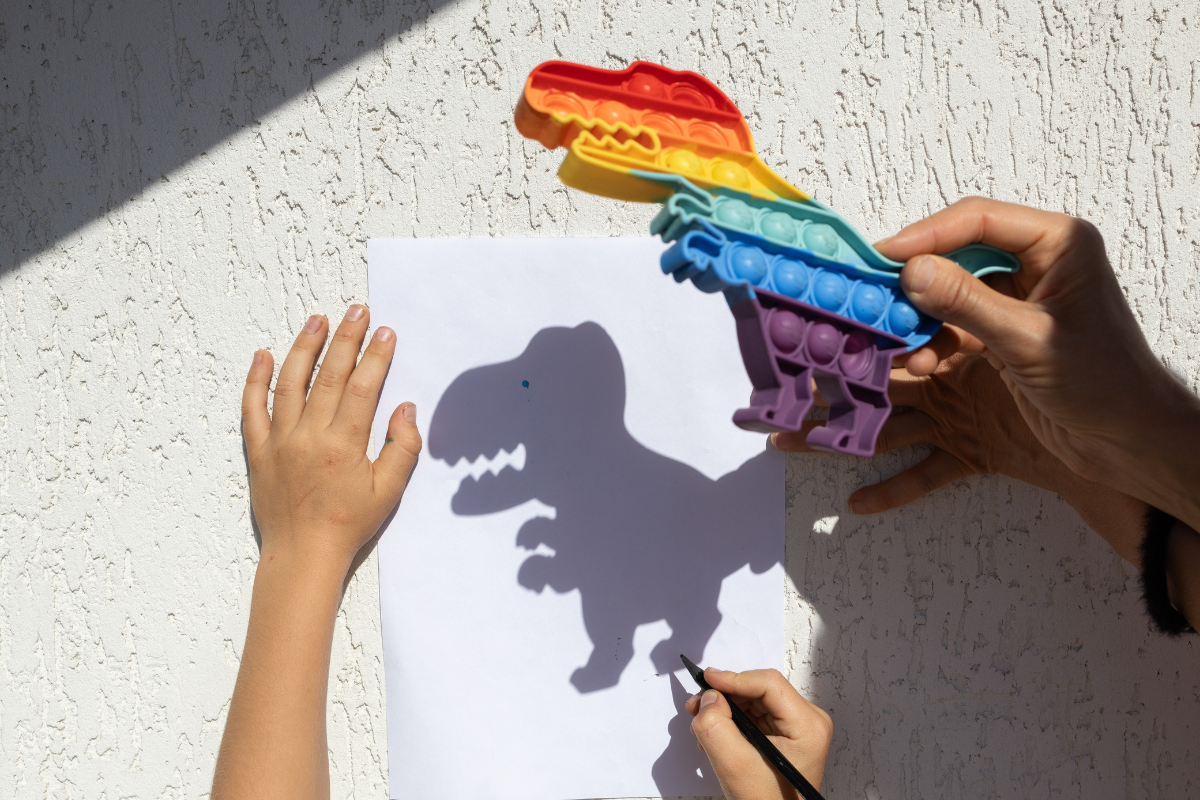
This activity not only is a fun art project but also serves as a practical lesson on how the sun moves across the sky and how it affects shadows, introducing basic concepts of astronomy and time measurement.
6. Examine leaves and insects with a magnifying glass
Arm your preschooler with a magnifying glass and explore the backyard, a park, or any outdoor area rich in plant life and insects. Examine the veins of leaves, the petals of flowers, or the tiny legs and wings of insects.
This activity encourages curiosity and a deeper appreciation for the small wonders of nature.
Sensory Play Activities for Preschoolers
Sensory play engages multiple senses and can help preschoolers’ cognitive development. Set up sensory bins with materials like sand, water, rice, beans, and various objects and tools for exploration. Incorporate different textures, colors, and smells.
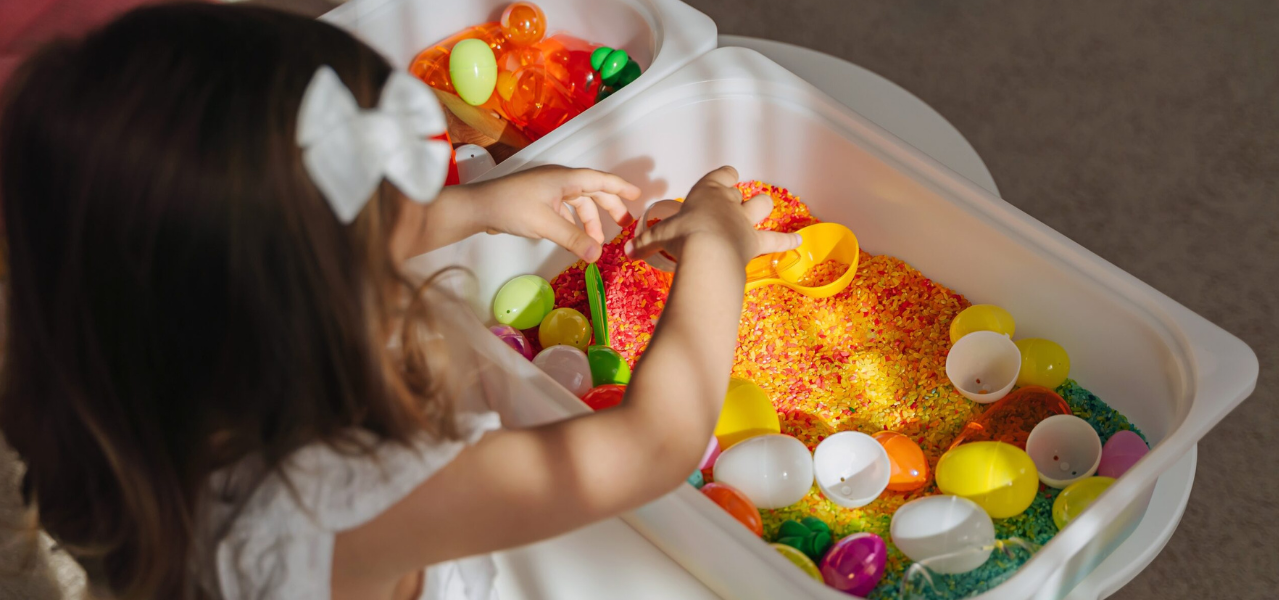
Let children dig, pour, and manipulate the materials freely. Sensory play enhances fine motor skills, encourages imaginative play, and aids sensory integration.
Additional Sensory Bin Activities for Your Preschooler
1. Create a frozen sensory bin
Fill a large bin with ice cubes and hide small waterproof toys inside. As the ice melts, children can dig through the bin to discover the toys.
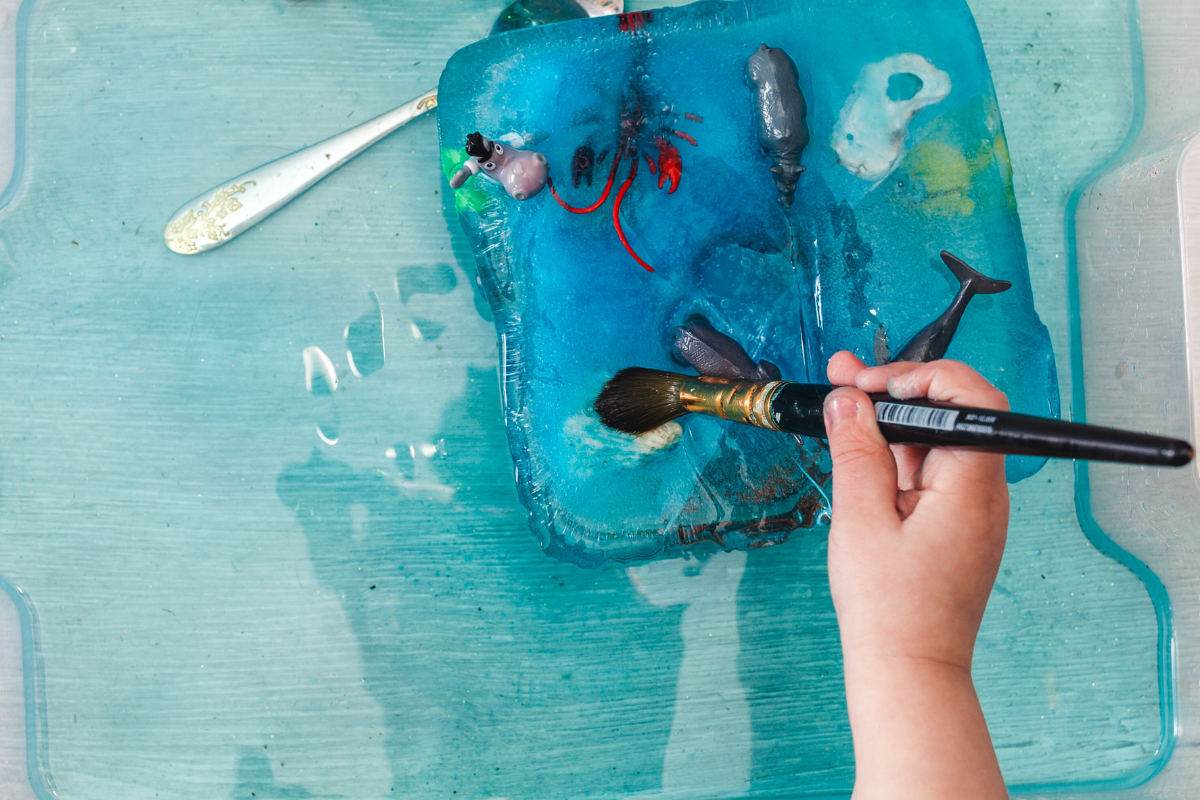
This activity can provide relief from the summer heat and stimulates tactile exploration, encouraging children to experience different textures and temperatures. It’s a fantastic way to develop fine motor skills and patience as they wait for the ice to melt.
2. Alphabet Sensory Bin
This hands-on activity involves filling a container with various sensory materials like colored rice or beans and adding alphabet letters for your child to explore.
Add alphabet letters for you child to explore and find. Playing with your child and talking about each of the letters will help your child with letter recognition. Creating your own alphabet sensory bin is easy and can provide hours of interactive learning. Learn how to create an alphabet sensory bin and discover its benefits here.
3. Set up a beach-themed sensory table
Create a miniature beach on a sensory table using kinetic sand, seashells, small buckets, and shovels. Children can mold the sand, bury and find shells, and create their own beach scenes.
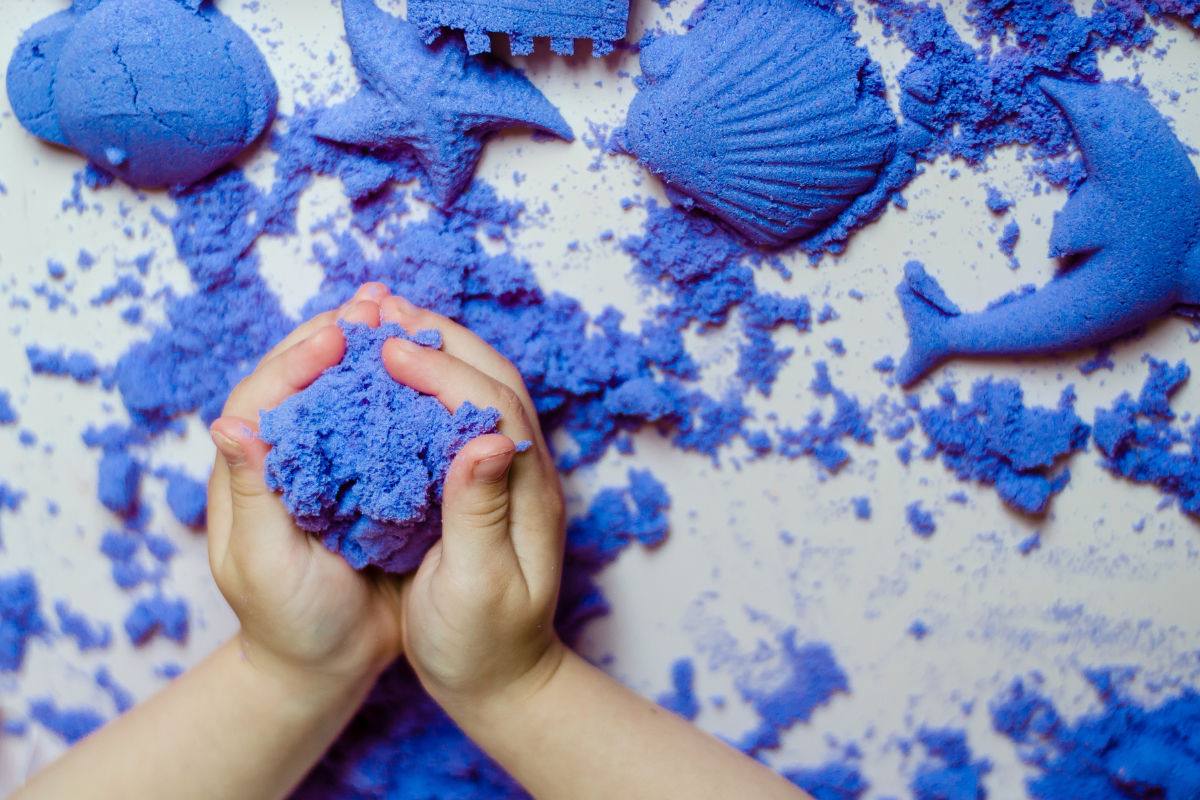
This setup encourages imaginative play and tactile exploration, helping to develop fine motor skills and an understanding of textures.
4. Create a cold and colorful sensory experience
Freeze colored water in ice cube trays and let children play with the ice cubes on a hot day. They can observe the ice melting and the colors mixing, creating a beautiful sensory experience. Work with your child to recognize the colors and how they mix together.
While your child plays, talk about the idea of colors and color mixing, along with the concept of how water can be frozen solid and then change shapes as it melts.
5. Set up a water play station
Provide a variety of containers, funnels, and water toys for a water play station. Children can experiment with pouring, measuring, and transferring water between different containers.
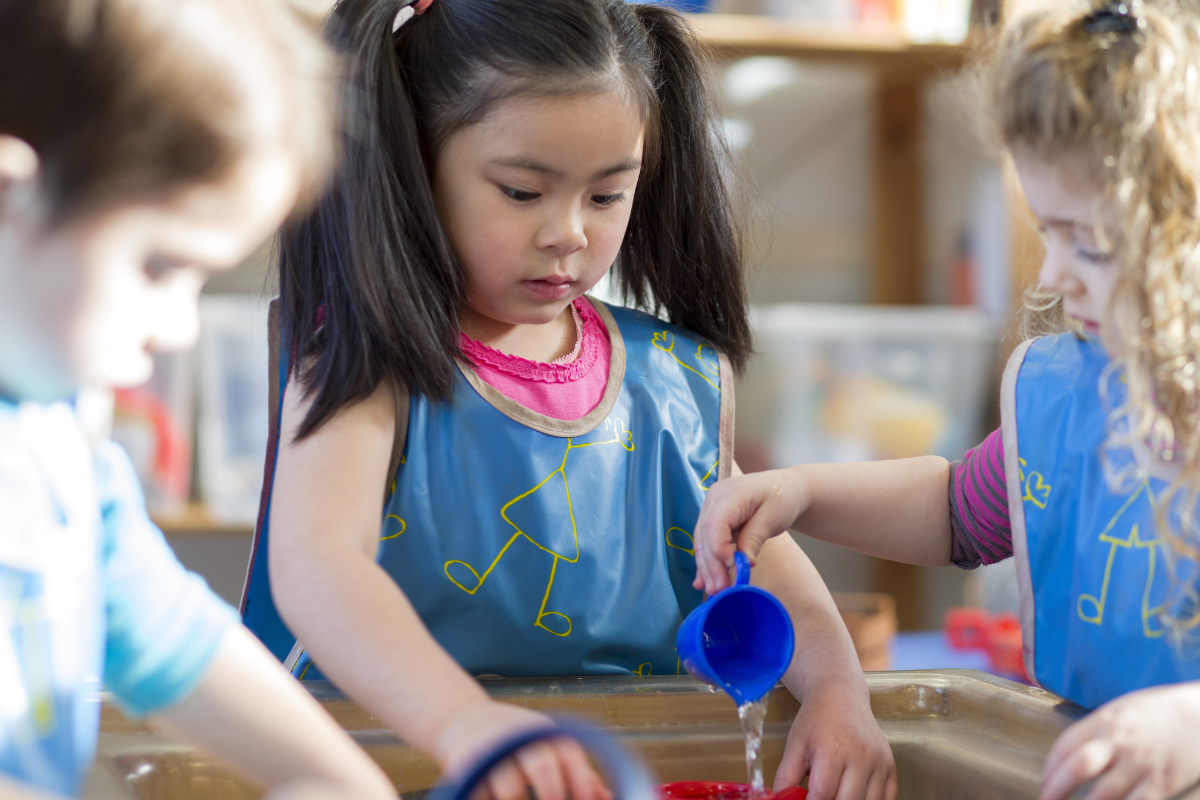
This type of play can promote understanding of volume and cause and effect, develops motor skills, and offers endless entertainment and learning opportunities.
Important Note: Remember to always monitor young children around water for safety!
6. Create a sensory obstacle course
Design an obstacle course that includes crawling over and under pool noodles, walking over sensory mats with different textures, and stepping on textured stones.
This course challenges children physically while providing a variety of tactile experiences. It encourages gross motor skill development, balance, and coordination, all within a fun and engaging sensory-rich environment.
